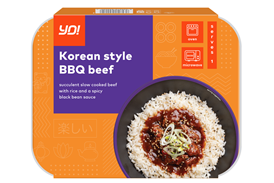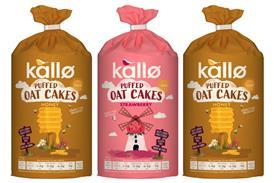ow productivity and high tempers. The 1970s was a decade of upheaval, as strikes took an unprecedented toll on the running of the country. After the Opec oil crisis of 1973, inflation was rampant and unemployment rocketed. The UK started to lag behind the US and Europe as it overspent on consumer goods and underspent on industry.
In the circumstances, an explosion of impulse brands brought some cheap cheer. The 1970s was unquestionably the creative climax for crisps, giving birth to Wotsits (1970), Chipsticks (1971), Hula Hoops (1971), Ringos (1973), Skips (1974), Frazzles (1975), Discos (1976), Squares (1976) and Monster Munch (1978).
On the confectionery side, there was Curly Wurly (1970), followed - in the sweltering heatwave year of 1976 - by Double Decker, Yorkie and Cadbury’s Caramel. And in 1977, the death of Elvis was offset by the birth of Pot Noodle.
The bright design of these innovations belied the grim mood. While the miners’ strike of 1972, and the introduction of the three-day week in 1974 - in reaction to coal shortages - was the most infamous, there were strikes across both public and private sectors. In November 1978, there was panic buying in supermarkets after bakers went on strike. It prompted many producers to ration their bread. And in January 1979 came the ‘winter of discontent’, in which thousands of public workers went on strike over pay freezes.
Yet despite the strikes, technology was having a major impact on brands: as domestic freezers started to flood the market, the 1968 launch of Bejam was followed by the arrival of Iceland in 1970. In 1973, EPoS and RFID tagging were invented. And in 1974 - the year McDonald’s came to these shores - the first barcode was appearing on a 10-pack of Juicy Fruit gum in the US. By the end of the decade, these little black and white lines were - like the fast-food chain - near ubiquitous here, too.
In the meantime, the inexorable rise of supermarkets continued. This was the era in which Sainsbury’s gained ascendancy over Tesco - which was forced to abandon Green Shield stamps in 1977 while simultaneously losing out on sales to Kwik Save’s “baby shark” retailing methods, which enabled the discount retailer to compete.
History of Brands
- 1
- 2
- 3
- 4
- 5
- 6
- 7
- 8
- 9
- 10
- 11
- 12Currently reading
History of brands: the 1970s
- 13
- 14
- 15














No comments yet